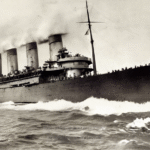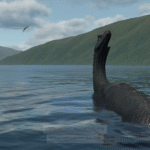What Are the Secrets Behind the Bermuda Triangle’s Unexplained Disappearances?
What Are the Secrets Behind the Bermuda Triangle’s Unexplained Disappearances?
The Bermuda Triangle, a region in the western part of the North Atlantic Ocean, has long been the subject of fascination and fear due to its notorious reputation for unexplained disappearances of ships and aircraft. This area, defined by points in Miami, Bermuda, and San Juan, Puerto Rico, has seen countless stories of vessels vanishing without a trace, leading to a myriad of theories and speculations. But why does this mystery endure? Understanding the enigma of the Bermuda Triangle is not merely an exercise in curiosity; it touches on broader themes of human experience, scientific inquiry, and the limits of our understanding of nature. 💡
A Brief History of the Bermuda Triangle Phenomenon
The Bermuda Triangle’s notoriety began to take shape in the mid-20th century. While maritime folklore existed prior, the term “Bermuda Triangle” was popularized by author Vincent Gaddis in his 1964 book “Invisible Horizons: True Mysteries of the Sea.” Gaddis documented several high-profile incidents, such as the disappearance of Flight 19, a group of five TBM Avenger torpedo bombers on a training flight in December 1945. After losing contact, a rescue plane sent to find them also vanished, adding to the Triangle’s mystique.
Since then, the area has been the site of numerous disappearances, leading to sensationalist theories about paranormal activity, alien abductions, and even underwater cities. However, a closer examination reveals a more nuanced narrative that intertwines human error, environmental factors, and technological limitations. 🛥️
Core Concepts: The Geography and Environment of the Bermuda Triangle
The Bermuda Triangle encompasses roughly 500,000 square miles of ocean, characterized by high traffic from commercial and private vessels. Its unique geographical features contribute to its reputation:
- Shallow Waters: The region has numerous shallow areas and underwater features that can be hazardous for maritime navigation.
- Weather Patterns: Sudden storms and unpredictable weather can arise quickly, complicating navigation for even the most experienced sailors.
- Magnetic Anomalies: Reports suggest that magnetic compasses can behave erratically in this region, leading to navigation errors.
The combination of these factors contributes to the frequency of incidents, as conditions can change dramatically with little warning, leading to catastrophic outcomes. 🌊
Scientific Theories Explaining Disappearances
While many enthusiasts embrace supernatural explanations for the Bermuda Triangle’s mysteries, scientific investigations provide several plausible explanations:
- Human Error: A significant number of incidents can be attributed to navigational mistakes or poor decision-making under distress.
- Environmental Factors: The Gulf Stream, one of the strongest ocean currents, can rapidly disperse wreckage, making recovery difficult.
- Gas Hydrates: Undersea methane hydrates can erupt and create large bubbles, potentially sinking ships by reducing buoyancy. ⚠️
Each of these theories has merit, and together they paint a picture of the Bermuda Triangle as a complex interplay of natural phenomena and human error.
Real-World Examples of Disappearances
Several well-documented cases highlight the complexities surrounding the Bermuda Triangle:
| Incident | Date | Description |
|---|---|---|
| Flight 19 | December 5, 1945 | A training flight of five bombers disappeared; a rescue plane sent to find them also vanished. |
| USS Cyclops | March 1918 | A Navy cargo ship with over 300 men and cargo disappeared without a trace. |
| Star Tiger | January 30, 1948 | An aircraft on a flight from the U.S. to Bermuda vanished, with no distress signals sent. |
These incidents often lack clear explanations, leading to ongoing intrigue and speculation. However, each case also underscores the importance of thorough investigations and the need for improved safety measures in maritime travel.
Alternative Perspectives: Skepticism and Debunking Myths
While the Bermuda Triangle continues to captivate imaginations, skepticism is essential in understanding this phenomenon. Many researchers argue that the purported mysteries are exaggerated. For instance, the U.S. Board on Geographic Names does not recognize the Bermuda Triangle as an official name, and the U.S. government does not acknowledge it as a hazardous area. Most incidents can be attributed to natural causes or human error, aligning with the historical record of maritime incidents elsewhere. ✅
Common Misconceptions About the Bermuda Triangle
Mythology surrounding the Bermuda Triangle is rife with misconceptions. Here are some common ones:
- More ships disappear here than anywhere else: Statistically, the Bermuda Triangle does not have a higher rate of disappearances than other heavily traveled sea routes.
- It’s a paranormal hotspot: Many experts emphasize that the majority of disappearances can be rationally explained by natural phenomena.
- All ships are doomed: Thousands of vessels pass through the area annually without incident, emphasizing that it’s not inherently dangerous.
Notable Fact: According to the National Oceanic and Atmospheric Administration (NOAA), the Bermuda Triangle is no more dangerous than any other part of the ocean.
Best Practices for Investigation and Study
For those interested in current and future research regarding the Bermuda Triangle, several best practices can enhance the investigation process:
- Utilize Technology: Modern navigation technology, including GPS and advanced radar systems, can help prevent incidents.
- Promote Awareness: Educating sailors and pilots about the unique challenges of this region can reduce human error.
- Encourage Scientific Inquiry: Engaging scientists in multidisciplinary studies can yield more comprehensive insights.
By fostering a culture of safety and scientific exploration, the mysteries associated with the Bermuda Triangle can be better understood, potentially leading to innovative solutions to mitigate risks.
Future Developments and Ongoing Research
The Bermuda Triangle remains a topic of active investigation. Advances in technology, including underwater drones and improved mapping techniques, are providing new insights into the region’s underwater geography. Ongoing studies aim to better understand the environmental factors that could contribute to maritime incidents. This research is crucial, not only for addressing the myths surrounding the Bermuda Triangle but also for enhancing maritime safety in general.
As science progresses, we may find answers to questions that have plagued humanity for centuries, transforming the Bermuda Triangle from a place of fear into one of understanding and respect. 💡
Conclusion: Unraveling the Mysteries of the Bermuda Triangle
The Bermuda Triangle continues to captivate the imagination, balancing between myth and reality. While the allure of supernatural explanations persists, a closer examination reveals a tapestry woven with human error, environmental factors, and scientific inquiry. Understanding this enigmatic region requires an open mind and a commitment to rigorous investigation. As we continue to explore the mysteries of the Bermuda Triangle, we not only seek to explain the inexplicable but also enhance our knowledge of the natural world and the forces that govern it.
Other Articles
Recent Posts
- What Happened to Flight MH370? The Conspiracy Theories That Still Haunt Us
- What Secrets Lurk Within the Walls of the Infamous Trans-Allegheny Lunatic Asylum?
- What Evidence Supports the Existence of Bigfoot in the Pacific Northwest?
- What Happened to the Indus Valley Civilization? Unraveling the Mysteries of Ancient Urban Life
- Can Telepathy Be Scientifically Proven Through Laboratory Evidence?







